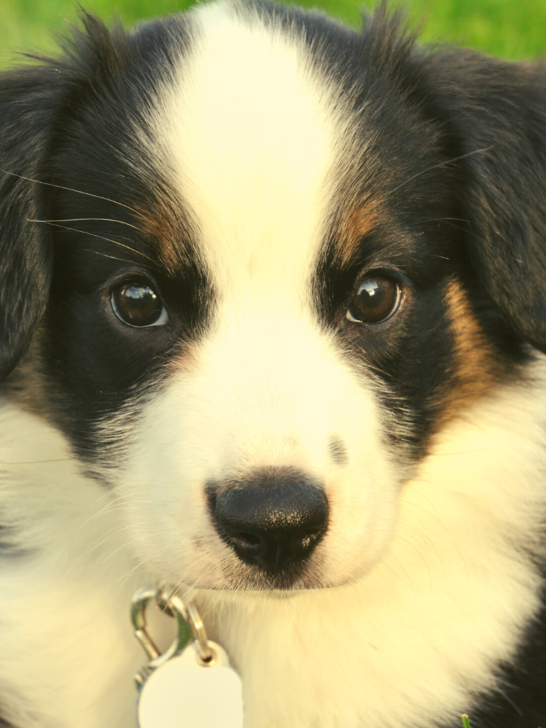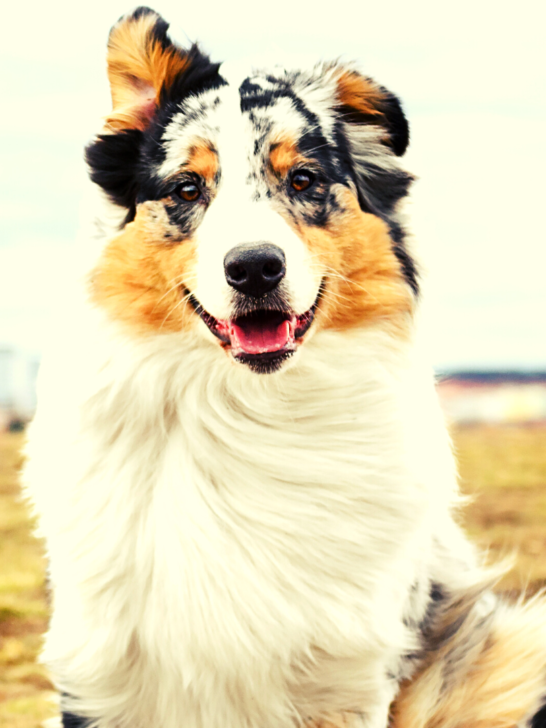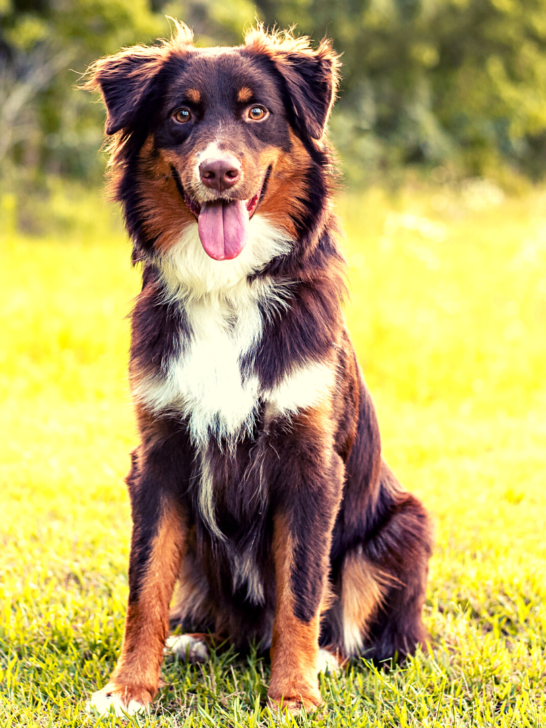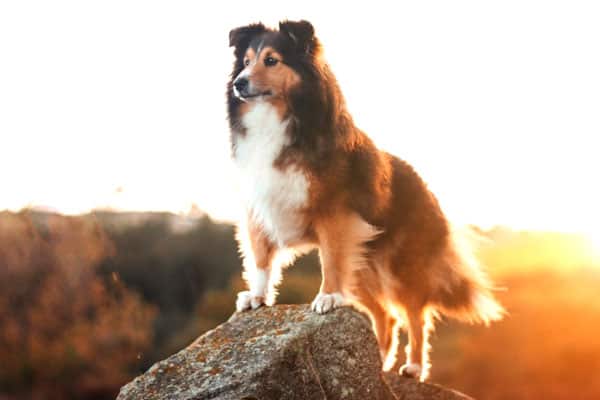Dachshund Australian Shepherd Mix: The Ideal Housedog?
When it comes to our dog breeds, we all want to know everything we can about them, don’t we? How tall will they be, will they get on with children, will they need special requirements as they age?
These questions circle our brains and leave us desperate for answers.
Especially when considering owning a mixed breed, two different breeds of dog mixed, what could go wrong? You don’t need us to tell us that there can be an increased health or complications risk or that sometimes the mix of breeds isn’t good.
But still, we have these questions, and they need answering, especially before you bring your new dog home.
Crossing these two dogs has led to beautiful puppies, but are they the right ones for you? Today, let’s find out!
We have everything you need to know about Dachshund Australian Shepherd mixes here! Dachshund Australian shepherds are one brand, in particular, we all want to know more about.
Keep reading for all the information you need to help you make an informed choice today!
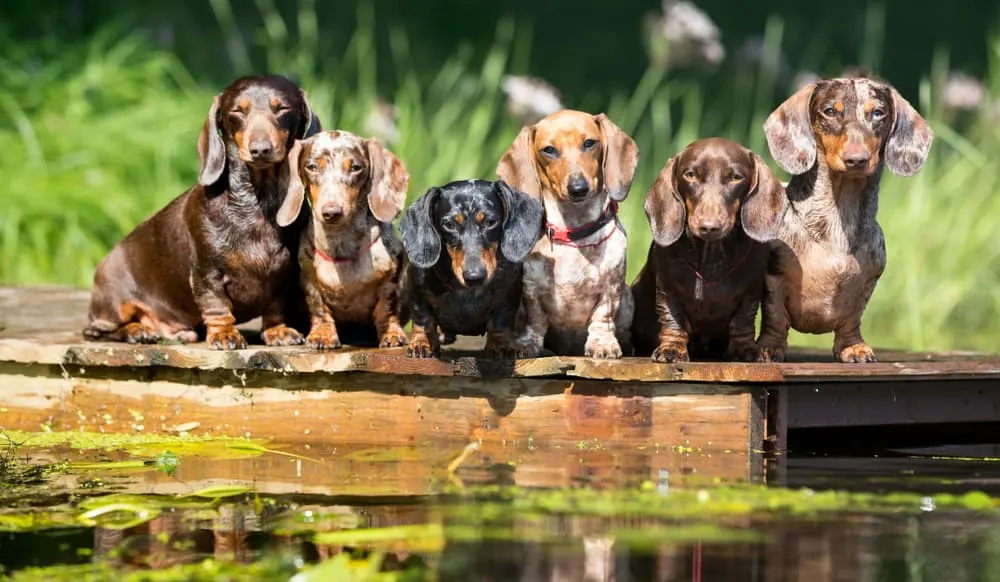
Dachshund Australian Shepherd Mix History
The mixing of Dachshunds and Australian Shepherds is a fairly new one! It’s growing in popularity, fueled undoubtedly by the craze for unique and mixed breed dogs (we can blame social media for this one).
As it’s new and not commonly done, there isn’t a great deal that we know about it.
Helpful, we know! But there is little that we can say about the mixing of Dachshund Australian Shepherd or Auxie Doxie! It’s more than likely that these dogs are accidentally bred, either in family homes or animal shelters.
While they might be available for purchase, these cute dogs aren’t as common as other breeds.
You are more likely to find one at a rescue center. To understand them a bit better, let’s take a look at the history of both dogs that go into creating them.
Dachshund History
Dachshunds, or sausage dogs, are a popular breed that has been around since the 15th century. They were originally bred in Germany and used as badger hounds.
Their job was to dig into the rabbit, fox, and badger tunnels, for hunting or pest control.
To ensure they could do the job properly, they have short legs and strong backs. They were also very energetic, allowing them to power through and get the job done!
It wasn’t until the late nineteenth century that Dachshunds arrived in the US and became a recognized breed in 1935.
Today, Dachshunds are rarely used as hunters. Instead, they are lap dogs, companions, and family pets. We bet their ancestors think they are living a life of luxury these days!
Australian Shepherd History
The Australian Shepherd, despite its name, isn’t actually from Australia! Its heritage is a bit murky, with some theories suggesting they originate from the Basque area of the Pyrenees mountains (between France and Spain for those unsure).
They made it into the US during the nineteenth century, with their name coming from the Shepherds who migrated to the US from Australia. From this point, Australian Shepherds were bred by American ranchers.
They became loyal stock dogs that had a fantastic work ethic and endurance levels. These dogs were typically used to herd sheep and cattle in rough terrains. Currently, these dogs are popular, not just with ranch owners but homeowners too.
Whether they live at home as companion dogs or are working dogs, they are still intelligent and versatile with natural herding abilities.
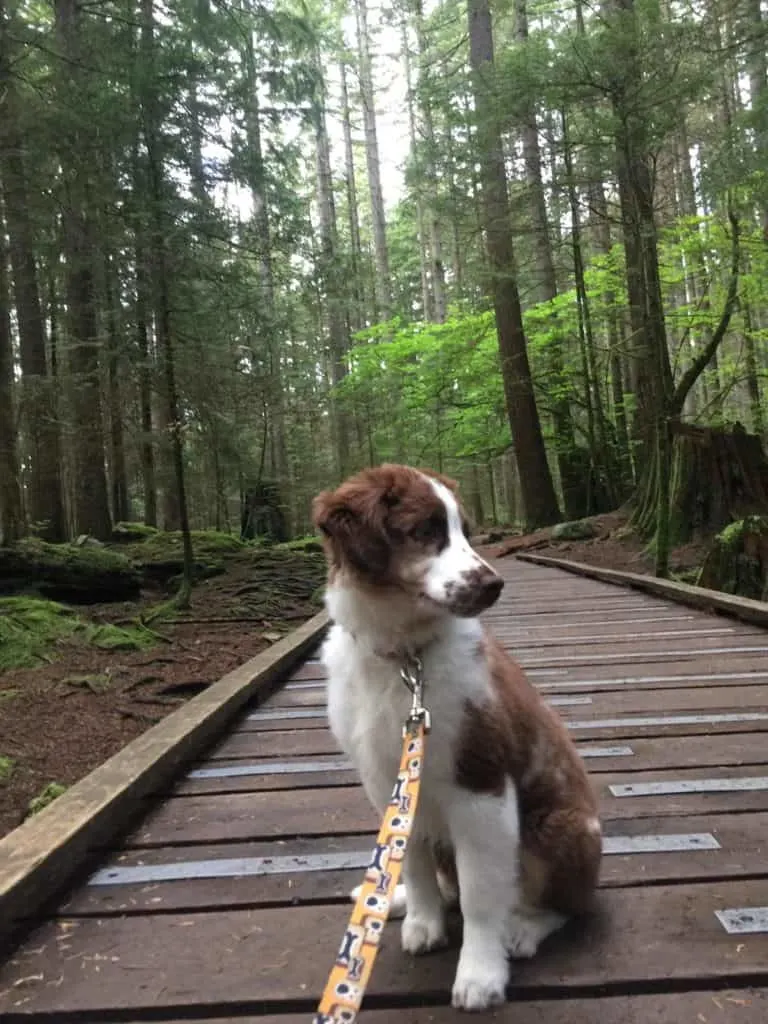
Personality and Temperament
Now that we have covered the breeding history of these dogs, you might be wondering, what happens when you blend them? We already know that these are beautiful dogs, but what about their personality and temperament?
Well, let’s take a look at that now! We will also look at the personality and temperament of Dachshunds and Australian Shepherds separately, so you can see how their genetics have played out.
Dachshund Australian Shepherd Mix
As it’s a mixed breed, predicting the temperament and personality of the Auxie Doxie is not easy. The lineage of both parents and any other mixed breeds used will influence the dog’s temperament, meaning we cannot give a one-size-fits-all answer today.
However, we see a trend among their personalities and temperaments that we can look at now. Dachshund Australian Shepherds tend to be very energetic thanks to their breeding!
As both their parents were traditionally used for hunting, they have lots of energy that will need regular exercise and play to burn off.
They also tend to be quite impatient. You might find your Auxie Doxie barking at you to hurry up with food or to play with them. Some people have described their temperament as like toddlers full of sugar and without a nap.
And we would say they aren’t far off! You can expect an excited dog when you get a Dachshund Australian Shepherd.
Dachshund Australian Shepherds are courageous and dedicated to their families. They are loyal dogs that thrive as part of a pack and will be devoted to you and your family no matter what.
It can be reassuring and nice to have this devoted and unconditional love, but there is a downside.
It makes these dogs wary of strangers. They tend not to be calm around strangers, with their behavior ranging from shy and afraid to territorial depending on your dog. While it’s good to be a little wary of new people, it can mean you have an unsocial dog.
To combat this, you must socialize your dog from an early stage. If you have rescued the dog from a shelter, it might be more difficult, but for those that want a family dog or regularly have people visiting your homes, this will be an essential task you will want to undertake.
Dachshund
Dachshunds tend to be playful and highly intelligent dogs. They are extremely loyal and devoted, making wonderful companion dogs or additions to your family.
However, they are also quite stubborn. It can make training them a little difficult, but it’s nothing some training classes can’t fix!
They respond best to positive reinforcement and are lively dogs that tend to brighten everyone’s day!
Australian Shepherd
Just like Dachshunds, these dogs are incredibly intelligent too. They are also affectionate and good-natured dogs that tend to make fantastic additions to families. Their temperament also sees them used as herders, police dogs, and compete in obedience trials.
These are active dogs too that require plenty of exercise and stimulation to stay healthy.
Dachshund Australian Shepherd Mix: Size, Height, and Weight
Again, as these dogs are a mixed breed, it can be difficult to say exactly what they will look like. It will depend on the dogs used in the breeding and their lineage too, sometimes these dogs can run a little smaller or larger than what we suggest!
So the size, weight, and height that we offer might be a little off!
Generally speaking, though, you will find that your Auxie Doxie will be:
- Size – Medium
- Height – 10-15 inches
- Weight – 13-45 pounds
As you can see, the mixing of the Dachshund and Australian Shepherd produces a dog that is somewhere between its parent’s two sizes.
They take roughly a year to reach their full size, although don’t be alarmed if your dog grows for another few months.
Keep an eye on their weight, as too much can be painful and lead to joint issues in the long term.

Dachshund Australian Shepherd Training and Exercise needs
As we mentioned before, these mixed breeds need plenty of exercise to burn off all their energy! Walks and plenty of playtimes (accompanied by naps) are the best way to meet your Auxie Doxies exercise needs.
We recommend a 60-90 minute walk for these dogs, ideally split across two walks and a playtime session. Depending on the shape of your dog, you should tailor their exercise to them.
Those with a more Australian Shepherd body type should run, but those with a Dachshund body (more elongated) avoid running as it can hurt their sensitive spines.
These dogs need lots of exercise, and we would class them as moderate to high activity and exercise levels.
These dogs aren’t the easiest to train. Despite both breeds being highly intelligent, they can use this to their advantage, meaning they won’t always listen or will try to trick you into getting their way! And when it comes to training, you are going to be disappointed.
For first-time dog owners, they aren’t the best pets to have. You need to establish yourself as the alpha quickly to avoid them getting any ideas and trying your best! Puppy training classes are a good idea, and be sure to use lots of positive reinforcement and treats to train your Aussie Doxie.
Dachshund Australian Shepherd Mix Coat care, shedding, and grooming
Dachshund Australian Shepherds tend to shed a lot, so you will need to be prepared for this. Regular grooming and brushing can help, as well as vacuuming your home regularly to avoid a build-up of fur.
They need to be brushed weekly and more frequently during shedding seasons. If your dog has inherited the Australian Shepherd’s coat, then you will need a few different brushes to ensure they are tangled and mat-free.
You only need to bathe them when it’s necessary as their skin can be a little dry. Be sure to use natural dog shampoos that help with dry skin to avoid any issues.
Try and brush your dog’s teeth regularly too, or give them daily dental chews if this proves too difficult.

Dachshund Australian Shepherd Mix Longevity and health concerns
The life expectancy and potential health concerns of mixed dogs can be hard to pinpoint, and again, it does vary from dog to dog. Typically, you can expect your Auxie Doxie to live for between 13 to 17 years.
We know that’s a long time to spend with your dog, how lucky is that?
They do run the risk of health conditions and concerns, especially as they age. Let’s take a look at the most common you need to be aware of.
Eye problems
As both the parents are susceptible to eye-related issues, you must keep a close eye on your mixed breed’s eyes. Regular visits to the vet will keep you on top of things and allow you to spot any changes or concerns early and easily.
Intervertebral disc disease
The back problem is often found in Dachshunds or any mixed breeds with Dachshunds. The discs in your dog’s spine can deteriorate over time and press on the spinal nerve. It can be very painful for your dog, leading to paralysis and reducing its lifespan.
If you notice any signs of pain or problems with their back, take them to the vet immediately.
Hip dysplasia
Again, this is another painful and serious condition that your dog could develop. Hip dysplasia occurs when the hip joint hasn’t developed properly, meaning the ball and socket don’t fit together.
Instead of working smoothly, they grind against easter, destroy the joint, and leave your dog in lots of pain.
If your dog isn’t jumping or putting weight on one of their legs, they need to be seen by a vet immediately.
It’s important with this mix of dogs to keep them as healthy as possible. They can also be prone to seizures and skin problems. Providing them with regular exercise, a healthy diet, and regular vet appointments ensures that your dog is well cared for and any problems can be identified quickly.
Dachshund Health concerns
Dachshunds tend to suffer from a range of problems, although regular vet appointments can help identify them early on. Eye and skin problems can be an issue with them, so ensuring you don’t bathe them regularly and use natural shampoos will help.
They can also suffer from Intervertebral Disc Disease, hip dysplasia, knee dislocation, hypothyroidism, and obesity. You can reduce the risk of most of these by ensuring that your dog is the correct weight and gets plenty of exercise.
Regular vet appointments can also spot any potential issues quickly.
Many of these conditions can be painful for Dachshunds, and they are a risk in mixed breeds. If you notice any change or your dog seems in pain, take them to the vets immediately.
Australian Shepherd health concerns
Australian Shepherds tend to have a life expectancy of 12 to 15 years. This can be impacted by a range of health issues and their lifestyle. These dogs need exercise to ensure they remain fit and healthy!
They do run the risk of possible genetic health issues that you should be aware of. Hip dysplasia and elbow dysplasia are the most common and can be very serious conditions that need to be treated quickly.
Final Word
And just like that, we have come to the end of our Dachshund Australian Shepherd mix guide today. As you can see, these dogs can be fantastic additions to your home.
Providing they are socialized properly as soon as possible and have plenty of space to run and play; they will be wonderful additions to your family.
You should be aware of some health concerns before making your decision, but none that should overly put you off. Will we see more of these puppies as time goes on? Who knows!
But one thing is for sure; if you see an Aussie Doxie in your local animal rescue or shelter, they aren’t one you should walk past if you can provide them with the loving home they need!
















